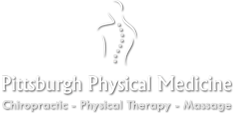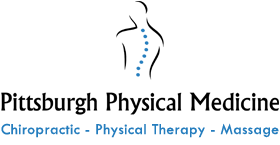Torn Meniscus in Pittsburgh PA

A torn meniscus is a common knee injury that can occur due to sudden twisting or rotational movements or as a result of wear and tear over time. The meniscus is a C-shaped cartilage structure that acts as a cushion and shock absorber between the thighbone (femur) and the shinbone (tibia). When the meniscus tears, it can lead to pain, swelling, and restricted movement. Physical therapy plays a crucial role in the rehabilitation process, offering a range of interventions to help individuals recover from a torn meniscus in Pittsburgh PA. In this description, we will explore what a torn meniscus is and highlight some of the physical therapy techniques used to aid recovery.
Description of a Torn Meniscus and Physical Therapy Interventions in Pittsburgh PA for Recovery
Understanding a Torn Meniscus:
A torn meniscus refers to a tear or damage in the rubbery, wedge-shaped cartilage located in the knee joint. The meniscus serves as a cushion and stabilizer, providing shock absorption and support during movements such as walking, running, and jumping. Torn menisci are common in athletes, particularly those involved in sports that require quick pivoting and sudden changes in direction. However, meniscus tears can also occur in non-athletic individuals, often due to degenerative changes that happen over time.
Physical Therapy Interventions for Recovery:
Physical therapy is an essential component of the care of individuals with a torn meniscus. The primary goal of physical therapy is to reduce pain, restore function, and improve overall knee joint mobility. A physical therapist and/or chiropractor will conduct a thorough evaluation to assess the extent of the tear and develop a personalized care program. Here are some common physical therapy interventions used to help individuals recover from a torn meniscus:
- R.I.C.E. Protocol: The R.I.C.E. protocol (Rest, Ice, Compression, Elevation) is often the initial technique for a torn meniscus. Physical therapists and/or chiropractors educate patients on proper rest, the application of ice packs, compression techniques using bandages or braces, and elevation of the leg to reduce swelling and alleviate pain.
- Manual Therapy: Manual therapy techniques involve hands-on manipulation and mobilization of the knee joint and surrounding structures. Physical therapists and/or chiropractors use gentle movements and pressure to improve joint mobility, reduce pain, and restore normal range of motion.
- Strengthening Exercises: Targeted strengthening exercises are essential for individuals recovering from a torn meniscus. Physical therapists and/or chiropractors guide patients through exercises that focus on strengthening the muscles surrounding the knee, such as the quadriceps, hamstrings, and calf muscles. Strengthening these muscles helps to stabilize the knee joint and provide better support for the injured meniscus.
- Range of Motion Exercises: Restoring normal range of motion in the knee joint is crucial for recovery. Physical therapists and/or chiropractors utilize specific exercises and stretching techniques to improve flexibility and increase the knee's range of motion. This helps individuals regain the ability to fully bend and straighten the knee.
- Balance and Proprioception Training: Balance and proprioception exercises are essential for restoring stability and preventing future injuries. Physical therapists and/or chiropractors employ techniques that challenge balance and enhance proprioception, such as standing on one leg, using stability balls, or performing exercises on uneven surfaces. These exercises help retrain the muscles and improve joint control and coordination.
- Functional Training: Functional training focuses on activities that mimic daily tasks or sports-specific movements. Physical therapists and/or chiropractors incorporate exercises that simulate real-life activities to help individuals regain the strength, coordination, and endurance necessary for their desired level of function.
- Education and Home Exercise Program: Physical therapists and/or chiropractors provide education on proper body mechanics, posture, and techniques for injury prevention. They also develop personalized home exercise programs that individuals can continue independently to maintain their progress and prevent future meniscus injuries.
Conclusion
A torn meniscus can cause significant pain and limit mobility, but with proper physical therapy interventions, individuals can recover and regain function. Physical therapists employ a variety of techniques, including manual therapy, strengthening and range of motion exercises, balance and proprioception training, and functional training. By working closely with a physical therapist and adhering to a personalized care plan, individuals with a torn meniscus can experience reduced pain, improved knee function, and a return to their desired level of activity and quality of life.
Request An Appointment Today!
OFFICE HOURS
Monday
8:00am - 6:00pm
Tuesday
2:00pm - 6:00pm
Wednesday
8:00am - 6:00pm
Thursday
8:00am - 6:00pm
Friday
8:00am - 12:00pm
Saturday & Sunday
Closed
Pittsburgh Physical Medicine
5916 Penn Ave
Pittsburgh, PA 15206


